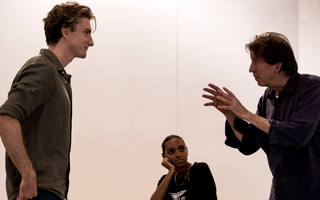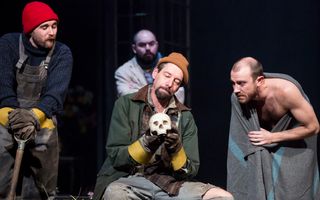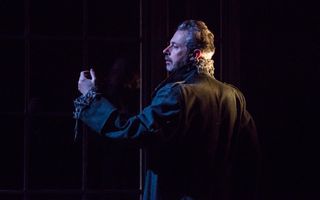 On Stage
On Stage
The opening scene of Hamlet is a brilliant example of Shakespeare’s manipulation of the elements of drama to create conflict, tension, atmosphere and engagement for the audience.
In your small group (3-4 students), read Act 1, Scene 1. Work together to answer the following:
A. TENSION
Look at these moments to identify how Shakespeare establishes tension:
- Francisco is on stage first but doesn’t speak first. How does Shakespeare jolt the audience right from the outset?
- Two opposing opinions are expressed before the ghost appears. What are they and how does Shakespeare use Horatio to create conflict?
- What different types of characters are we watching and how does the difference aid the tension?
- The ghost’s appearance comes mid-sentence – why is that good stagecraft?
- How do the characters raise the stakes when the ghost appears a second time?
- How does the tension finally break for the characters?
B. FOCUS
The scene exists to frighten and unsettle the audience. The physical appearance of the ghost may achieve some of that. Whether you use a visible or imagined ghost, what or who must be the focus to help the audience truly empathise and feel the terror of the scene?
C. MOOD/ ATMOSPHERE/ LANGUAGE
What mood is Shakespeare trying to create and how does he do it? Examine the language and stagecraft carefully for evidence.
D. MOVEMENT
Shakespeare gives you almost every necessary movement in the scene. Answer the following:
- Why does he contrast stillness with action?
- Mark in your script where characters sit and where they stand. How does the stillness and sitting help the acting of the scene?
- Identify and track the movements and actions of the ghost from the language.
E. PACE AND RHYTHM
- How and why does Shakespeare change the pace of the scene?
- Identify where the pace accelerates rapidly and slows down. (Hint: Lines 1-22 are a rapid-fire rhythm – how is that made clear to the actors? Then what happens next?)
F. SYBOLISM
Shakespeare gives you almost every necessary movement in the scene. Answer the following:
- The ghost’s return has symbolic meaning for the state of Denmark. What does it represent?
- Mark in your script where characters sit and where they stand. How does the stillness and sitting help the acting of the scene?
- Identify and track the movements and actions of the ghost from the language.
EXTENSION ACTIVITY:
Using your evidence, set up a space and perform the scene, making sense of its dramatic elements. Francisco may double as the ghost or you may simply imagine the ghost. You may also make any cuts necessary to Horatio’s long speeches. Be bold and clear.











